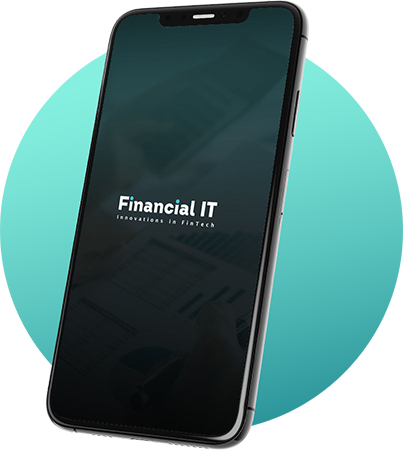Published
- 06:00 am
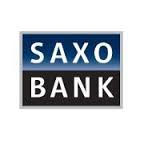
Saxo Bank, the online multi-asset trading and investment specialist, today announces the appointment of Ulrik Ross as Head of Group Treasury, effective March 1, 2018.
Ulrik Ross will report directly to Steen Blaafalk, Head of Group Finance & Risk (GFR), and will be part of the global management team in GFR and Saxo Group’s Senior Management Team (SMT).
In his role, Ulrik Ross will assume the overall responsibility for all Treasury activities, including managing the bank’s liquidity and professional bank and broker relations. He will also be responsible for pricing the Bank’s capital and liquidity resources, as well as contributing to a strategic approach to both source of funds, taking industry and regulatory changes into account in a proactive manner. A key part of the responsibility is to be very client focused and in particularly interact with the Group’s White Label partner clients and institutional clients.
Ulrik Ross has extensive international experience from various senior level positions at Investment Banks and Financial Institutions in London, Helsinki and Copenhagen. The new senior hire most recently served as Managing Director Global Head of Public Sector and Sustainable Financing at Hong Kong Shanghai Banking Corporation (HSBC) in London, where he successfully implemented a client and product focused growth strategy, which gained HSBC multiple financial markets awards.
Prior to this, Ulrik spent six years at Nomura International, where he led the Debt Capital Markets division for Northern Europe, CEE and Southern Africa. Ulrik initially worked as a treasury and funding specialist in Denmark and Finland, prior to the long career in London.
Commenting on his appointment, Steen Blaafalk, Head of Group Finance & Risk at Saxo Bank, said:
“I am very pleased to appoint such a high caliber executive to take care of the Group Treasury and be part of the Senior Management Team. Ulrik is ambitious and result-driven with a proven track record in building and managing regional and global international businesses. He has successfully navigated multi-cultural opportunities offered by small and large cap companies and has consistently improved the performance of complex companies in international financial markets. I am sure that with Ulrik’s strong expertise in financing and capital markets, we will further improve the efficiency of our treasury activities.”
Ulrik Ross commented on the new role:
“I am very pleased to be joining Saxo Bank. It is very exciting to be part of such an agile and scalable FinTech Bank with state of the art client focused product offerings. Saxo Bank is a Financial Technology leader and a breath of fresh air in a fast-changing industry. I look forward to adding value to Saxo Bank and its clients as treasurer for the Group.”
Related News
- 09:00 am

In a major development for the global telematics market, insurance providers building their own customer-facing websites, apps and notifications for telematics programs can now simply and cost-effectively plug into the LexisNexis® Global Telematics Platform and build innovative applications with the launch of one of the first Software Development Kits (SDK) for the usage-based insurance market.
David Lukens, Director of Telematics and Global Products, Insurance, LexisNexis Risk Solutions said: "The SDK demonstrates our commitment to supporting our customers' growth in the telematics market given the complexity of such a project, as well as our expertise and drive to keep innovating to ensure our customers are at a competitive advantage.
"We have opened our platform and data environment to allow insurers, brokers and third party developers to access our data processing systems in a secure, curated and documented environment and to build their own applications and websites using our platform as the core. Our application development team has been leading the way, building and optimizing telematics apps for over a decade. The SDK takes this technical knowledge and vast experience and puts it into the hands of insurers and brokers."
This development is set to help insurance companies grow their market share more swiftly and more profitably through new products for new consumer segments, by enhancing an existing product, or by using better information to improve segmentation.
David Lukens continues: "By using the LexisNexis Risk Solutions SDK, insurance providers can go to market at a fraction of the cost and in a fraction of the time required to build a telematics product from scratch. Keeping the applications up to date with the numerous software updates released for smartphones of all types is also a greater commitment and investment than many companies are prepared to make. Utilizing our SDK allows updates to be made more quickly and more simply.
"This SDK leverages the full power of the LexisNexis Global Telematics Platform (GTP), offering a distinct advantage for firms operating across borders. This is the ultimate tool for product development as the sector looks to capitalise on the wider market opportunity beyond young drivers."
The LexisNexis Risk Solutions Software Development Kit helps solve:
- Cost – the insurance provider can access and build applications on the LexisNexis Global Telematics Platform (GTP) without the cost of developing a whole technical architecture and hosting environment to mirror the GTP.
- Scale – the SDK empowers insurers and brokers with the proven big data platform built by LexisNexis Risk Solutions, including our robust security and privacy practices.
- Speed of Development – by leveraging the company's pre-built platform technology and data management services, insurance providers can focus on consumer-facing elements, design and delivery. They can simply add driver scoring and driver safety features to their existing applications.
- Data Treatment & Consistency – different devices deliver data at different frequencies and formats. The LexisNexis analytics team solves this problem for insurers by normalizing data from different sources, including auto manufacturers.
Related News
- 02:00 am
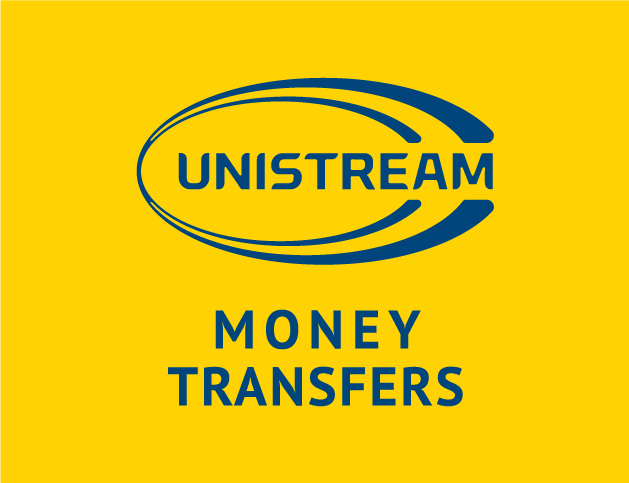
Unistream Bank now offers a more convenient and simple way of payment for everyday purchases via contactless Visa cards. To make a payment, all it takes is putting the card to the terminal to process in a few seconds; there is no need to hand it over to a cashier for a transaction. For purchases less than 1000 roubles, the transaction is made without a PIN-code.
Contactless payments have become popular in Russia lately. Today with a simple touch of a terminal one can make payments in large chains such as McDonalds, KFC, Starbucks, Azbuka Vkusa, Ikea, etc. Contactless payments can be made via all the terminals marked with a special "wave" symbol.
"Unistream Bank has always focused on developing and increasing the accessibility of new technologies that become incorporated into our modern society. We enjoy offering our clients instant payment contactless cards with Visa payWave technology thus making the process easier. Owing to the fast service, the reliability, as well as the high-progress service infrastructure, contactless cards will emerge into wide usage," said Nadezhda Kibalnik, Deputy CEO of Unistream Bank.
In 2017 alone Unistream Bank issued more than 70,000 cards, thus exceeding the total of 100,000. In 2017 card transactions turnover increased by 350 percent and exceeded 2.3 billion roubles. This impressive growth is the result of the high-quality customer service and the efficient distribution channels. Cards can be ordered through the Bank's website or via call-center with delivery to the client by courier.
Unistream Bank cardholders can also use a mobile banking app to make a wide range of transactions, including international money transfers and utility payments, at lower rates.
Related News
- 05:00 am

Moving toward a world beyond cash, Mastercard is partnering with cities and other technology companies to improve overall quality of life, while helping them manage their logistics in a more efficient way.
Over the next few weeks, Valparaiso, Chile, one of the most iconic and touristic locations in Latin America, will enable contactless and mobile payments for transit. With this move, Valparaiso joins a group of 100+ cities around the world including London, New York, Singapore, Sydney, Rio de Janeiro, Bogota and Mexico City that offers residents and visitors the opportunity to get on their way faster and easier.
Valparaiso Metro riders will soon no longer need to pre-pay their fare at the ticket kiosk, instead they will simply access their fare funds by tapping their contactless credit, debit, prepaid card, smartphone or wearables (such as wristbands and others) on the terminal reader. Essentially, riders will pay-as-they-go speeding up their commute time.
“Latin America is the most urbanized region worldwide, with around 80% of its population living in cities. While every city has its own characteristics, they are all dealing with similar problems such as road congestion and pollution. Cities across the region are looking for ways to modernize public transportation systems, making them more efficient and accessible to the population,” says Gilberto Caldart, president, Mastercard Latin America and Caribbean. “It will take a collaborative and holistic effort from both the public and private sector to meet these challenges – and Mastercard is taking a leading role in making cities more inclusive.”
Since the introduction of contactless payments across London’s transit system in 2014, almost half of all pay-as-you-go journeys on the city’s underground, buses and commuter rails are paid that way. When commuters tap their contactless card or device at one of the readers, they’re guaranteed the best available fare at the end of a day or week.
In New York, travelers can “Masterpass” their ticket on their mobile device to access commuter rail lines. In Bogota, more than 20 million trips on the city’s public transport system each year are made using a combined payment and transit card.
In Singapore, contactless ticketing was recently launched across the city’s transit network, making it the first city in Asia to bring this convenience to its commuters.
In Latin America, Jundiaí (SP) is the first city to equip its 350-strong bus fleet with Mastercard’s contactless payment technology, allowing riders to simply and conveniently tap their device of choice. Brazilian cities are moving fast towards smarter solutions for transit. Rio de Janeiro has contactless enabled payments live in 5 train stations, while São Paulo, Porto Alegre, Curitiba and Brasília are piloting the system, which will be expanded in the next few months.
In Mexico City, the Metro authority has just announced that 450 thousand contactless Mastercard debit cards are now available for sale in two metro lines, as part of the efforts launched in November 2017 to modernize the transportation system in the city that presents the worst traffic in the world, according to the most recently TomTom Traffic Index, released in February 2017.
Colombia, the first country to launch a contactless solution for transit in Latin America & Caribbean region, has already 5 cities benefiting from a faster and easier way to pay. Up till now, more than 2 million hybrid cards have already been issued in the market.
Related News
- 06:00 am
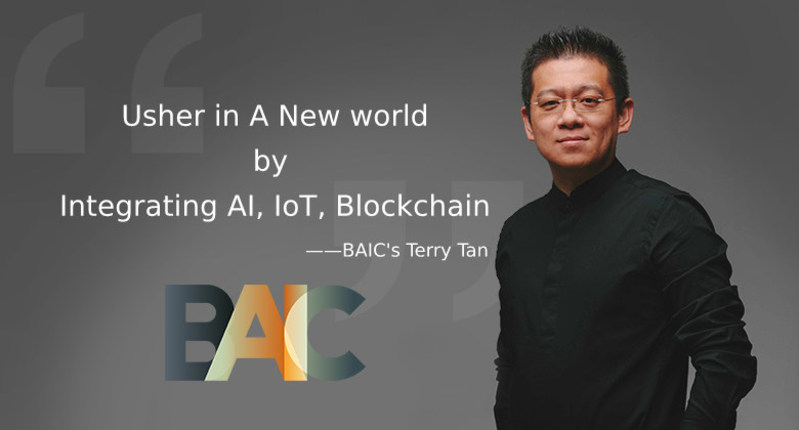
BAIC (Blockchain of AI and IoT) is a decentralized platform with the aim of promoting data interconnection, transaction settlement and smart contract between IoT and AI. BAIC believes that the data generated by human activity and the biological signals that are generated by the activity, representing all forms of labor, will become the value basis of the future AI world. BAIC's goal is to integrate AI, data and IoT by leveraging the BAIC value chain.
With data as its core value, BAIC provides end-to-end handling of data storage, data trading and data collection. Based on directed acyclic graph or DAG technology, the platform uses IoT devices and equipment as nodes to validate transactions, and, by amassing and collecting together nodes, can generate huge amounts of computing power, provide the critically-needed security, set up the reimbursement mechanism and reduce transaction barriers through a flexible charging mechanism for fees.
With the aim of promoting data trading and settlement between IoT devices and AI applications and encouraging consumers to share their data, the BAIC community launched a blockchain technology-based point token system based on incentives and the circulation of the value provided by IoT data.
For example, if an air conditioner part has failed or worn out, the platform can automatically notify the vendor who can change or repair the part and the transaction can be settled with tokens. The daily usage data collected from smart home appliances are shared with vendors, so that vendors can accurately deliver fully relevant advertising and return the advertising revenue to users through tokens, benefiting users.
"The goal of the BAIC community is to connect AI applications, Internet of things devices, and data through blockchain technology, enabling the data to be traded and circulated directly between users, data buyers, device vendors and advertisers and settled using BAIC's Token system, making users the true beneficiaries of their personal data." The idea gained a lot of support after it was shared with companies from different industries. The open-source blockchain technology community BAIC was established on this support.
The BAIC community was initiated by Terry Tan. Tan is an internet entrepreneur, the founder of IMIO Labs which is an AI enterprise and the chairman of the IEEE Smart Home working group. He studied in the United States, graduating from the University of Southern California with an MBA degree. He founded the world's largest Chinese Android developer community GFAN.COM, as well as the first Chinese hardware community PCBIRDS.COM and China's first online games company SQUARE ENIX.
Tan said: "AI and the Internet of things need technology support in terms of how the two will communicate with each other, and that can be provided by blockchain. The Internet of things and blockchain technology are key steps in the transformation from weak to strong artificial intelligence. I believe there is a great likelihood that this transformation will lead to the second explosion of science and technology after the industrial revolution, and that it will produce artificial intelligence on a level that is far superior to the human variety in the foreseeable future."
On the technical side, Tan said that the existing public blockchain is more or less unable to meet the needed levels of performance or functionality, so BAIC has chosen to launch its own public blockchain and provide two kinds of smart contracts. One is called the standardized smart contract, which targets straight-forward situations, fulfills the necessary business requirements, is standardized and highly efficient when it comes to execution. Without needing any further development, the contract provides the service on the blockchain via simple parameter configuration. The second, known as programmable smart contracts, supports fast blockchain applications by providing rich components tailored to the needs of users.
Mr. Tan added, "China now makes up 99 percent of the global production capacity of IoT devices. With that in mind, I believe that, as the technologies have been created by teams of developers located in China, these same teams should be involved in and even lead the development of the global public blockchain and the development of the standards. By working closely with the BAIC community and IoT firms across China, I have reason to believe BAIC has the potential to become the world's first widely-deployed IoT blockchain application and build the world's first test network connected to tens of millions of IoT devices."
BAIC hopes to integrate big data, AI and IoT via the blockchain and utilize a machine trading system and complete smart contract platform as the basis for the establishment of an IoT-AI ecosystem platform, which is able to supply data exchange, device settlement, as well as AI-enabled AIaaS services, in addition to providing manufacturers with self-directed access to the chain, all of which will benefit mankind.
Related News
- 04:00 am
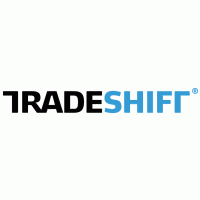
Tradeshift, the world’s largest business commerce platform, today announced the official launch of Tradeshift Frontiers.
“Our goal is simple and singular: To significantly impact B2B commerce and global supply chains in the next 5 years,” said Gert Sylvest, co-founder and GM Frontiers, Tradeshift. “We will leverage emerging technologies to make trade more inclusive, empowering, transparent and sustainable.”
Many tech companies have R&D labs and centers with closed doors. Tradeshift has structured its lab to encourage knowledge sharing that is global and distributed in nature—and open to partners across all walks of life, Sylvest explained. Tradeshift’s open, network- and ecosystem-oriented philosophy is essential for this endeavour.
“With Frontiers, we aim to bring the transformative potential of these technologies into the hands of every company in the network, no matter their size or role in the supply chain,” Sylvest said. “That also means unlocking greater value for small businesses and their trading partners to bring them on equal footing with the companies that dominate the digital supply chains today.”
Blockchain is among the first focus areas for the Frontiers lab initiative. Last October, Tradeshift joined the Hyperledger project as a governing member. The collaboration will bridge blockchains to the Tradeshift platform and help drive industry-wide impact. In commerce, every interaction between trading parties is subject to questions about trust and transparency. Blockchains, in essence, enable new incentive models to collaborate across the supply chain.
“The use cases we’re working through Frontiers cover a very wide variety of themes, including supply chain financing, asset liquidity, and supply chain transparency,” Sylvest said. “There is so much more potential than just cryptocurrencies.”
In the coming months, expect to see prototypes, apps, and services that highlight the potential of the future Tradeshift platform.
Related News
- 03:00 am

Roostify, a provider of automated mortgage transaction technology, today announced that it has integrated its online mortgage platform with LendingTree, the nation’s leading online loan marketplace.
“There is a digital gap in the mortgage industry: consumers mostly research and shop for loans online, but once they choose a loan the actual origination process is often still offline,” explained Nikul Patel, Chief Strategy Officer, LendingTree. “Our integration with Roostify brings the industry one step closer to the all-digital vision for a seamless consumer journey.”
Lenders can utilize the new integration to create a seamless path for consumers to search, select, apply for, and close a loan online. Consumers selecting an offer on LendingTree from a lender using Roostify will be able to authenticate into the lender’s Roostify-powered online experience, with all information securely pre-populated. The consumer can move from shopping around to getting their loan in just a few clicks, streamlining the experience and improving lead quality for lenders.
“Roostify is dedicated to improving the lending experience for both consumers and lenders,” added Rajesh Bhat, CEO, Roostify.
“Partnering with LendingTree, whose mission is to help consumers find the best home loan, helps us achieve both those goals, increasing efficiency and lead quality for lenders while offering consumers a faster, stress-free path to apply for and close a competitively priced home loan.”
The integration will enter general availability in Q1 2018 for all joint clients of Roostify and LendingTree.
Related News
- 07:00 am

Pindrop, the pioneer in voice security and authentication, today announced their proprietary Deep VoiceTM biometric engine, which utilizes the latest deep neural network technology for speaker recognition, to passively identify legitimate and fraudulent callers, solely by voice.
Pindrop’s Deep VoiceTM engine has expanded the company’s total addressable market from $2.5B to $7.8B with the introduction of a new authentication product, Pindrop® Passport.
Pindrop Passport is a multi-factor authentication solution that passively authenticates callers based on their voice, device and behavior as they naturally engage with a call center. Passport is powered by the first-of-its-kind Deep VoiceTM biometric engine that is able to recognize a caller by their voice even with short command-like utterances, regardless of if they are interacting in the IVR or with an agent.
"Our newly patented Deep Voice engine is creating new opportunities for Pindrop as we see voice eating all other interfaces," said Vijay Balasubramaniyan, CEO and co-founder of Pindrop. "Establishing trust, security and identity is key to unlocking brand loyalty with consumers. With today’s product expansion we are delivering an end-to-end voice identity platform for enterprises looking to reimagine the customer experience as voice becomes the dominant interface of choice."
Pindrop’s patented Deep VoiceTM biometrics was developed to address a number of shortcomings with the existing systems in the market, such as poor enrollment rates and accuracy that are further exacerbated by short utterances and poor call quality. The Deep VoiceTM engine also brings enterprise grade voice security by detecting new voice attacks such as voice synthesis and distortion and will usher in a new era of enterprise virtual assistants, chatbots and frictionless customer experiences.
Passport is comprised of three core machine learning technologies: Deep VoiceTM biometrics engine, combined with Pindrop’s proprietary PhoneprintingTM technology and ToneprintingTM behavioral analytics technology. Passport runs passively in the background of every call and identifies a caller based on who they are based on their voice, what they have based on their device and what they do based on their behavior. This replaces weaker forms of authentication that currently exist, including asking customers a set of knowledge based questions or laborious enrollment processes. Enterprises can now reduce call handle times by up to 55 seconds and call center operations costs by up to $1.00 per call, as well as reduce fraud losses and customer churn.
Related News
- 09:00 am

Integral, the financial technology partner trusted by leading banks, brokers, and investment managers to design, deliver and grow their FX businesses, announced today that it has expanded its market data offering for cryptocurrencies to include 14 major cryptocurrencies connecting to all major exchange sources across the U.S., Europe and Asia including Japan and Hong Kong.
“An accurate, stable, and reliable reference price is a requirement for any market maker,” said Harpal Sandhu, CEO of Integral. “The Cryptocurrency Market Data Service connects to the most price sources and applies the most advanced price discovery algorithm available.”
Integral has years of experience as a technology leader and innovator in foreign exchange and is now applying this ingenuity to the cryptocurrency market. The Market Data Service uses algorithms developed with Stanford University for Integral FX Benchmark to provide the most precise reference prices for cryptocurrencies.
“Integral’s Cryptocurrency Market Data has proven to be the most stable and most accurate price source for our market making service, especially in times of extreme volatility,” said Charalambos Psimolophitis, CEO of FxPro Group. “We will continue to expand our market leading position with additional product offerings based on this reliable platform.”
In the coming weeks, the Market Data Service will also make available a real-time consolidated order book across all 16 exchanges via its high-performance market data network in NY4, LD4 and TY3. Integral offers a variety of configurations of currency pairs and exchanges starting at US$1700/month.
Related News
- 08:00 am

A pioneering mortgage monitoring service provided by online broker Trussle is today being made available to all UK homeowners.
Switching inertia is a major issue in the mortgage sector, so the service has been designed to prevent mortgage borrowers from unintentionally slipping onto their lender's Standard Variable Rate (SVR) - a default product which typically has a much higher interest rate - when they reach the end of their mortgage deal’s initial period.
Just one month on an SVR can cost the average borrower with one of the UK’s six biggest lenders around £360 in extra interest[1]. There are currently at least two million borrowers in the UK needlessly sitting on their lender’s SVR, collectively paying close to £10 billion in excess interest every year.
Signing up to the mortgage monitoring service is simple, taking just two minutes using Trussle’s website. The borrower will then receive an email confirming that their mortgage is being monitored. Until the service finds a more suitable deal, the borrower will be prompted to update their details every three months to ensure the most accurate comparison is being made. As soon as the service identifies a more suitable deal, an automated alert will be emailed to the borrower with a link to continue the remortgage process online.
Trussle has already introduced the automated service to existing customers and in December 2017 helped their very first customer Dexter Lowe switch from his original two-year fixed deal. Dexter saved over £5,000 per year by not lapsing onto his lender’s Standard Variable Rate.
Ishaan Malhi, CEO and founder of online mortgage broker Trussle, said: “We know that at least two million mortgage borrowers in the UK are failing to switch at the right time. This is either because they don’t realise the benefits of remortgaging, forget when their current deal is due to end, or they had such a bad experience getting their last mortgage that they put off going through the process again.
“With our free monitoring service, borrowers can relax knowing that their mortgage is being proactively looked after and that they'll be alerted and guided through the switching process when the time is right.
“Offering this service to the UK’s 11 million borrowers is another step towards our goal of completely transforming the switching process and eradicating switching inertia.”
All Trussle’s existing customers have been automatically registered to the free monitoring service.










